Raf Freire
A novel method to measure the impact of water quality on judgement bias in wild juvenile fish
Freire, Raf; Nicol, Christine
Authors
Christine Nicol
Abstract
Methods to examine judgement bias in free-living animals in situ are required to address ecological, conservation and animal welfare questions. Following on from recent research showing judgement bias in fish, we developed a novel approach to measure judgement bias using the natural tendency of juvenile Murray cod (Maccullochella peelii) to approach a light-source, but move away from larger, potentially predator fish. Population-level judgement bias was determined from the number of Murray cod caught in three slightly different light traps containing; 1) a light-only (positive stimulus), 2) a predator-model (negative stimulus) and 3) an ambiguous-model (ambiguous stimulus). All combinations of ten water quality parameters recorded from each site were included in models to examine how well they explained (i) the presence of Murray cod and (ii) in sites where Murray cod were present the population-level judgement bias. We caught 113 Murray cod at 19 out of 33 sites and modelling highlighted the importance of dissolved oxygen to explain presence/absence of this species. More Murray cod were caught in light-only (positive stimulus) traps than in predator-model (negative stimulus) traps (P=0.04). Population-level judgement bias was overall negative, indicating a general tendency to avoid the ambiguous-model light trap. The top model (AICc=57.71, R2=0.63, P=0.025) indicated that there was greater avoidance of the ambiguous stimulus as salinity (coefficient -14.93±6.33, t=-2.36, P=0.043) and filterable reactive phosphorous increased (coefficient -0.19±0.0.09, t=-2.98, P=0.055) and pH decreased (coefficient 5.11±0.1.66, t=3.09, P=0.013). The above water parameters were not near known lethal levels, indicating a need to better understand the sub-lethal effects of water parameters on fish behavior and physiology. Our findings indicate that methods to measure population-level judgement bias can support research on the function of judgement bias and its possible relation to affect in fish. More generally, the method provides a potentially useful tool to bring together conservation biology and animal welfare disciplines.
Citation
Freire, R., & Nicol, C. (2024). A novel method to measure the impact of water quality on judgement bias in wild juvenile fish . Global Ecology and Conservation, 54, https://doi.org/10.1016/j.gecco.2024.e03086
| Journal Article Type | Article |
|---|---|
| Acceptance Date | Jul 8, 2024 |
| Online Publication Date | Jul 16, 2024 |
| Publication Date | 2024 |
| Deposit Date | Jul 9, 2024 |
| Publicly Available Date | Jul 19, 2024 |
| Journal | Global Ecology and Conservation |
| Electronic ISSN | 2351-9894 |
| Publisher | Elsevier |
| Peer Reviewed | Peer Reviewed |
| Volume | 54 |
| DOI | https://doi.org/10.1016/j.gecco.2024.e03086 |
| Keywords | Fish; Behavior; Affect; Welfare; Decision-making; MURRAY-DARLING BASIN; COGNITIVE BIAS; ANIMAL BEHAVIOR; PEELII MITCHELL; AIR-POLLUTION; LIFE-HISTORY; COD; WELFARE; RECRUITMENT; RESPONSES |
Files
Freire And Nicol 2024
(3.2 Mb)
PDF
Licence
http://creativecommons.org/licenses/by/4.0/
Publisher Licence URL
http://creativecommons.org/licenses/by/4.0/
Version
VoR
You might also like
An analysis of the welfare of fast-growing and slower-growing strains of broiler chicken
(2024)
Journal Article
The Gordon Memorial Lecture: Laying hen welfare
(2023)
Journal Article
Downloadable Citations
About RVC Repository
Administrator e-mail: publicationsrepos@rvc.ac.uk
This application uses the following open-source libraries:
SheetJS Community Edition
Apache License Version 2.0 (http://www.apache.org/licenses/)
PDF.js
Apache License Version 2.0 (http://www.apache.org/licenses/)
Font Awesome
SIL OFL 1.1 (http://scripts.sil.org/OFL)
MIT License (http://opensource.org/licenses/mit-license.html)
CC BY 3.0 ( http://creativecommons.org/licenses/by/3.0/)
Powered by Worktribe © 2025
Advanced Search
